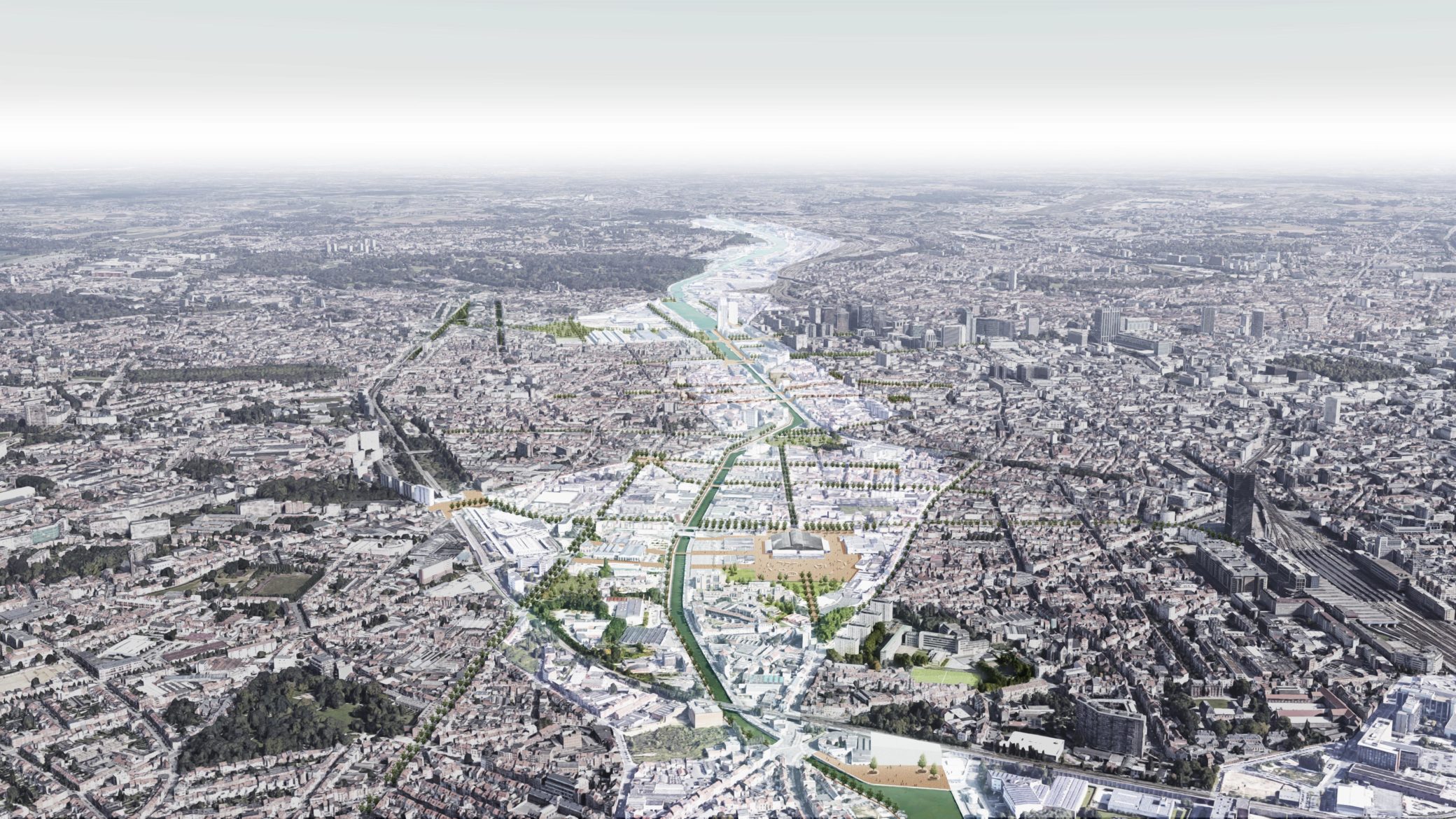BKP - Jules Ruhl

In 2021, ORG tackled the redesign of the sharply sloping sites along the Ropsy Chaudron street and Jules Ruhl street on both sides of the Brussels canal. Reality revealed challenges such as enclosed spaces, impractical stairs, and restricted areas due to truck turning radii.
Opportunities for improvement included upgrading the access to the entrance of the adjacent Delacroix metro station, expanding the blue-green network along the canal - see the Beeldkwaliteitsplan Kanaalzone (BKP) - and highlighting the heritage value of the Ropsy Chaudron Bridge.

A Flowing Landscape
It became clear from the study that a project proposing a visually cohesive, barrier-free space was necessary. The design therefore introduces a gently sloping landscape, connected to the surrounding streets. Existing boundaries or barriers from pits and curbs to walls are removed as much as possible. The landscape is divided longitudinally into three gradins that follow the contour lines. These allow for the integration of a small path and seating areas. On the left bank, a square designed with benches and a lighting element is added to enhance safety at the entrance of the nearby metro station.
A Clear Stair Design
The proposal integrates readable stairs at the core of the design, their strength lying in their simplicity and clarity. The stairs position themselves on the slope of the landscape and clearly follow the direction of the Ropsy Chaudron Bridge to the subway stations. Both sets are not parallel to the Ropsy Chaudron street, but slightly rotated towards the canal. They give a clear structure to the space, providing a visual relationship with the water as they descend. A gutter is also integrated for cyclists and caddy cars.
An Integrated Green-Blue Structure
In line with the ambitions of the BKP and the vision elaborated in the global sketch design, ORG's design adds as much green as possible to the embankments with a tree grid that extends to the street and square. To prioritize climate resilience, tree species compatible with canal-side greenery are selected. Moreover, low-maintenance undergrowth is chosen, to prevent erosion, avoid litter accumulation, add biodiversity value and maintain a wild character to the space.
Material Reuse
As the current form of the stairs was no longer qualitative, the design of the stairs is reimagined entirely. To still preserve as much of the heritage as possible, ORG’s proposal reuses the existing stones of the stairs. An inventory guides the quantities and dimensions of the design elements, re-used in a way that benefits the patrimonial components. Much care and attention is given to reinterpreting these heritage elements, such as the turrets that mark the entrance point to the bridge.
Location
Anderlecht, Belgium
Year
2019 - ongoing
Clients
Municipality of Anderlecht, perspective.brussels
Program
Public Space, Landscape
Collaborators
Bureau Bas Smets, ARA
Related Projects





